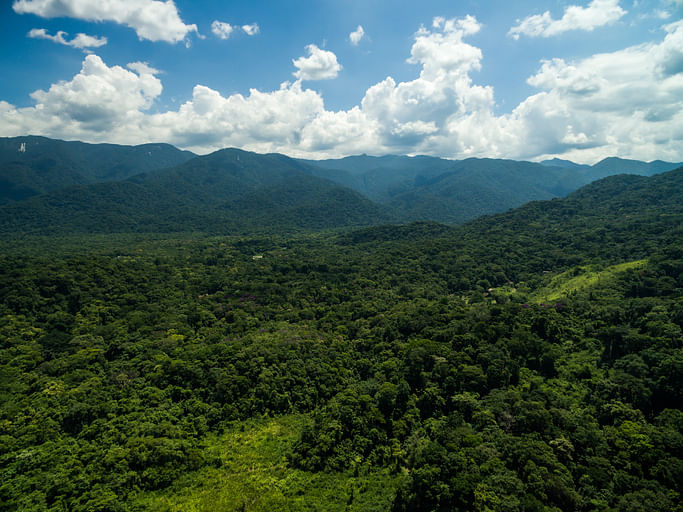
There is a strong belief in the government that one of the major hurdles to India becoming a 5 trillion dollar economy are the environmental laws and regulations, says Ritwick Dutta, founder of the Legal initiative for Forest and Environment, in an interview with DH's Ashish Tripathi. Excerpts:
Can we compare the approach of NDA and UPA governments towards environment?
If one compares the NDA and UPA so far as forest, environment and wildlife clearance, it may come as a surprise that there is no difference in either the number of projects approved or the rate of approval or rejection. The Environment Ministry acts on dictation given by other ministries. They rarely apply their mind. Big projects are rarely ever rejected. Cases like Niyamgiri mines of Vedanta which was rejected during the UPA rule were aberrations.
Jairam Ramesh was removed as environment minister under the UPA regime, not because he stopped projects, but because he wanted the environment ministry to have its own voice and be taken seriously.
In both the regimes, the environment ministers are supposed to say yes to all projects irrespective of the environmental consequences. Thus, we really can't find difference in numbers.
In fact, in some sectors, the number of approvals and diversion of forest land are less under the NDA than under the UPA regime. However, this reduced number is because of economic slowdown and not because the present government has any special concern for environment.
How different is the approach of the two governments?
The approach of both the governments has always been to approve all projects irrespective of the social and environmental concern. However, the basic difference is that under the present regime, there is a sense of pride in approving the destruction of forest, rivers and coastal areas. The environment minister proudly announces on social media about how many forest land, national parks and sanctuaries have been allowed to be diverted and deforested to ensure ease of doing business and promote economic growth. Under the UPA there were at least some initiatives to protect the environment: creation of the National Green
Tribunal, protection of the Western Ghats and imposing moratorium on new industries in polluted areas. Also, there was a sense of guilt while approving the destruction of nature.
Today, though the environment minister repeatedly talks about the ancient Indian culture of coexisting with nature; however what one sees in practice is more of a sad copy of western triumphalism over nature.
What impression does the recent meeting of the National Board of Wildlife (NBWL) via video conferencing give?
The issue is not about video conferencing. In fact, many standing committee meetings of NBWL have taken place through video conferencing even before the lockdown. Our concern should be about the outcome and process. There is no evidence to show that the decisions would have been different if the meeting was held in person. Today, we do not have a functional National Board for Wildlife; it has not met even once after it was reconstituted in 2014. The powers are exercised by the Standing Committee headed by the Union Environment Minister, who also happens to be the cabinet minister in-charge of Industry.
The two non-official members have remained mute spectators to the ecologically destructive acts of the National Board.
Chief Wildlife Wardens of states, despite being statutory authorities, speak less about wildlife and more about the need for roads and electricity. Most importantly, the entire functioning of the standing committee is completely illegal - it has no power or authority under the Wildlife(Protection) Act, 1972 to divert national parks and sanctuaries for activities which are not for the benefit of wildlife. This illegal act took place even without video conference.
In fact, I feel that video conference offers an opportunity to record the proceedings of the meeting so that one can know what has transpired. Thus rather than opposing meetings through video conferencing, we should demand that the video recordings should be made public. I am sure, our Protected Areas will be more secure if the decision makers know that their deliberations will be seen by all.
Does this hurry indicate anything about the government's policy?
Today, there is a strong belief among those in the government that one the major hurdles to India becoming a 5 trillion dollar economy are the environmental laws and regulations. There is a belief that once the forest land, national parks, sanctuaries, coasts are opened up and criss-crossed with highways, railway lines, canals, transmission lines and pock-marked with mines and malls, India will magically achieve its double digit growth. The economic advisers of the government however never factored in cyclones, droughts, floods and now the corona pandemic. The warning signs were ignored.
Rather than learning from the mistakes, the government has decided to follow a more obsessive path of industrialisation and environmental destruction at all cost. Nothing illustrates it better than the fact that when the world is moving to cleaner renewal energy and we as a nation are for the first time energy surplus, the central government has decided to aggressively promote coal mining which will only end up in forest loss, human displacement, polluted air and water.
With respect to the NBWL, in 2018, all 39 proposals for diversion for protected areas were approved; in 2019, all 64 proposals were approved and this year, all the 14 projects involving transmission lines, highways, railways, canals have been approved. Protected areas amount to less than 5% of the total land areas and the belief is that destroying them is critical to achieve economic growth. The NBWL rather than being a protector has become an active agent in this destruction. Each member of the Board should be made individually liable for the destruction.
What are the implications of such decisions on the ground?
The impact is bound to be serious. India is today the world’s most polluted country. More people die of water and air pollution in India than anywhere else in the world. More people depend on the natural ecosystem – forest, wetlands, grasslands and coasts for their livelihood and survival than in any other country. And yet, every action to protect these entities are regarded as a waste of financial resources. Our budgetary allocation for protection and regeneration of ecosystems is consistently reduced, while active efforts are made to destroy these entities. It is not just the government that has failed the environment; India’s judiciary, which at one time played an important role in protecting the environment, is largely a silent spectator; civil society is also largely unable to raise their voice for fear of state retaliation. No other country will suffer as much as India as a result of climate change and a resilient ecosystem is our best insurance.
Yet, we are not leaving any stone unturned to destroy this insurance cover. The corona pandemic has shown how at times of crisis, it is public hospitals and public spirited doctors we need the most and not shopping malls, highways and airports, which we celebrate as symbols of development. By building massive structures we have weaponised the environment and so when cyclones and floods happen, it is these human-made structures that kill us.
